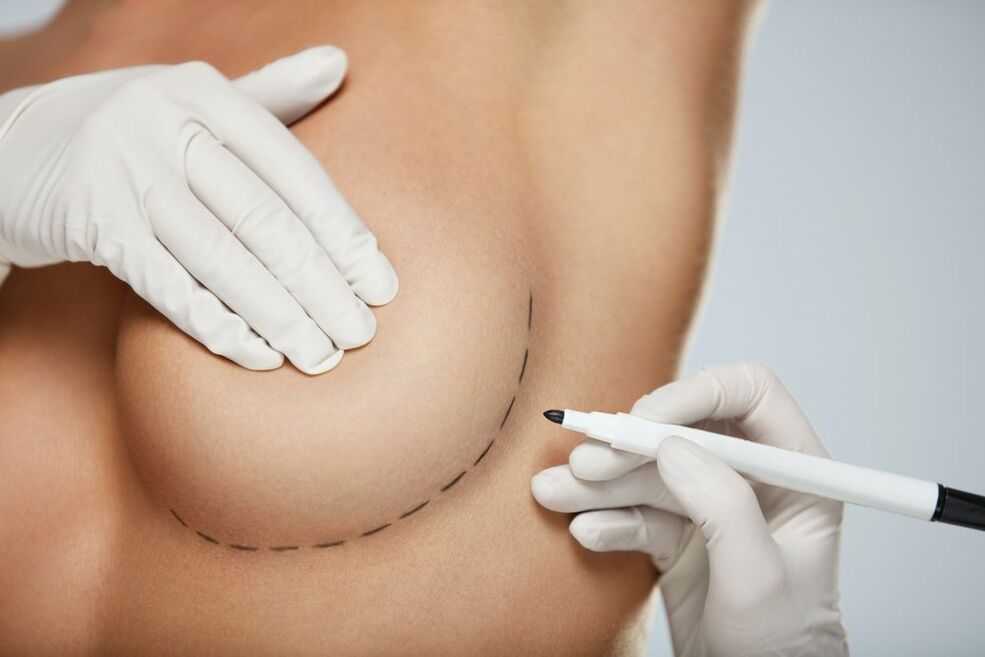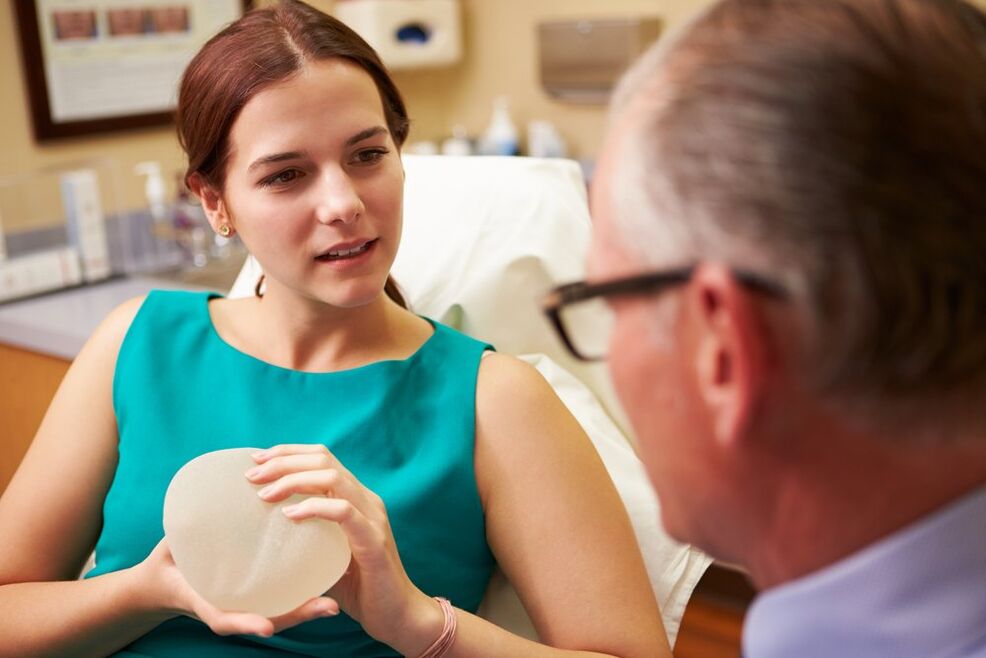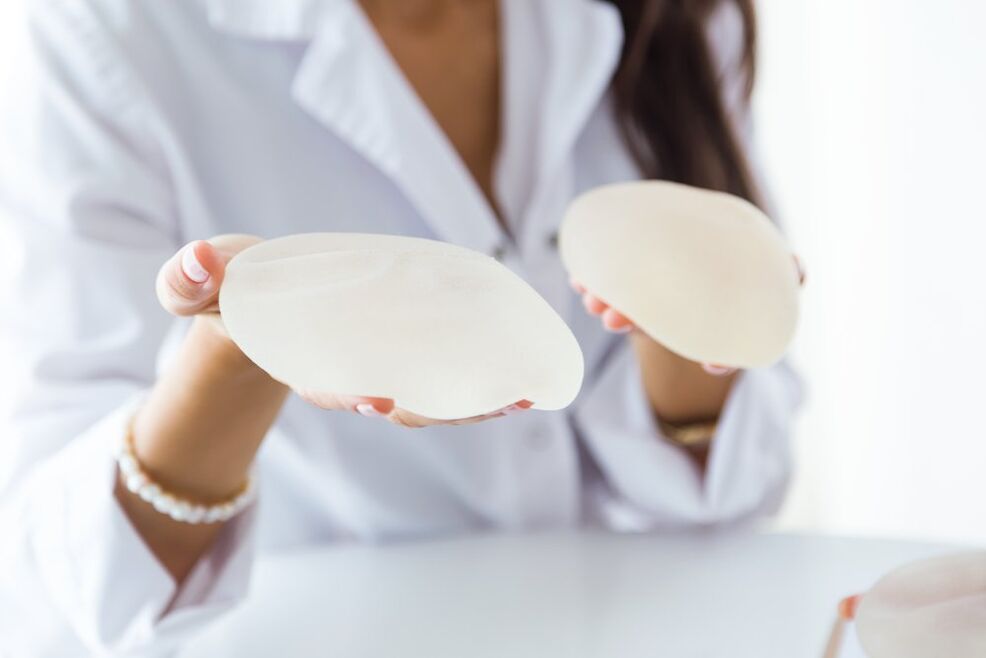Your body is your business! But when you come to a plastic surgeon with a request to enlarge your breasts, he will certainly ask about the reasons for the decision. And whether that's the desire to look beautiful in a bathing suit or to fulfill your partner's dream of a big breast, you're likely to be denied.
Because breasts can only be enlarged for you and only on condition that you want to feel comfortable in your body!
Honest Information About Breast Augmentation

Breast augmentation is a serious operation that requires an informed decision and careful calculation of possible risks. It is necessary to prepare for this: take the test, take the necessary exams, finish taking some medications in advance, lose weight if your weight exceeds normal and stop smoking.
But even careful preparation is no guarantee of a favorable result. So, before you decide to step into the surgeon's scalpel, find out what awaits you and what can go wrong!
Before and after photos are not always informative.
Today, any plastic surgery clinic has its own website, where you can see "before" and "after" photos of a particular doctor's operations. But when considering them, the patient should take into account that their breasts may look different.
To get an idea of what breasts will look like after surgery, a doctor of medical science, a plastic surgeon, advises evaluating the results of people with a similar body type. These photos will provide a more realistic image.
Breast augmentation is possible without surgery
Many women are tempted to enlarge their breasts without surgery in one or two procedures. Cosmetologists and plastic surgeons can fulfill this wish, suggesting the use of fillers based on hyaluronic acid or your own fat cells.
However, it should be noted that these are temporary solutions. They have advantages and disadvantages. And it is more difficult to predict the outcome of the procedure in this case than with surgical breast augmentation.
Correction of shape with fat cells has a significant drawback.

Not all fat cells will undergo a "transplant". According to the Doctor of Medical Sciences,30 to 50% of fat cells die.
At the same time, no one knows which cells will survive and which will not. Therefore, your expectations about breast augmentation with filling may not match the reality after the procedure.
The first breast surgery is unlikely to be the last
Implants are not a permanent purchase. According to the plastic surgeon, most of them need to be replaced within 12-15 years after surgery, and some even before.
The implant may start to leak or form scar tissue around the implant, which impairs the shape of the breast and poses a health threat. Also, external and internal reasons can push implant replacement – weight gain or loss, breastfeeding, gravity.
The doctor recommends planning an operation only when there is confidence that the budget will allow for the reconstruction operation for the next 12 years.
There are several types of incisions during the operation.
Experts say that depending on the initial shape of the breast and the desired parameters, the doctor may suggest surgery with an incision in the armpit, fold under the breast, in the areola and, in some cases, in the abdomen.
The most common options are an incision in the areola and the crease under the breast. The location of the likely incision should be discussed with your doctor.
It is not always possible to enlarge the breasts to the desired volume
If a representative of the weaker sex by nature has an A-size cup, she will not be able to obtain the DD volume in one operation. The skin of the breast, like the body, takes time to get used to the changes. Therefore, the doctor recommends breast augmentation in 1-2 sizes first and, if necessary, after a few years, replace the implants with larger ones.
Drastic changes can be costly

"The most important thing when planning breast augmentation surgery is finding a good implant, " says MD, plastic surgeon. "By my estimates, about 30% of errors and complications during plastic surgery are due to the doctor or patient choosing the wrong implant. "
Choosing an implant that is too large for the patient can lead to narrowing of the breast tissue and surrounding muscles, which is difficult to reverse. A good doctor will always tell you the maximum implant size the patient can guide.
It takes time to recover after surgery
Both after breast augmentation and after breast reduction, the patient needs time to recover. The minimum sick leave will be 5-7 days. In the end, you can return to work, as long as it doesn't involve heavy physical work.
Pain relievers work wonders today, but don't overestimate them!
Implants can be felt under the skin
There is an opinion that implants are always felt when touching a woman's breast,but this is not the case. Correctly selected and well installed are hard to find. However, there is such a possibility!
Another person is more likely to suspect the presence of implants in a woman who initially had a small breast volume (and therefore a small amount of tissue) than in a woman whose volume was larger.
Some implants can harm health

Experts link some types of breast implants to an increased risk of cancer. "We are talking about a variety such as anaplastic large cell lymphoma. There is an opinion that it is somehow linked to textured breast implants, since most of the time women with oncology are diagnosed with oncology", warns the plastic surgeon.
Correction can affect ability to breastfeed
"By making an incision in the breast, we disorganize the natural anatomy, we reduce the amount of breast tissue that produces milk", says the doctor. - However, there is a high chance that you will still be able to breastfeed. If the incision is far from the nipple, the milk ducts and glands are unlikely to be damaged. "
Temporary loss of nipple sensation after surgery
For several weeks after the operation, many patients notice lack of tenderness in the breasts, but in most cases this is a temporary phenomenon. Complete loss of sensation is rare.
A doctor of medical science, a plastic surgeon, says that although she has operated on thousands of patients, she has never found a complete loss of breast sensation in a woman.
Surgery can affect a woman's posture

If a woman chooses a breast volume slightly larger than her natural data, her posture is unlikely to change. But when it comes to impressively sized breast implants, their weight can be noticeable and therefore will be more difficult to use.
If there is a history of back pain, this factor should be taken into account.
Maybe breast augmentation alone is not enough
After pregnancy, childbirth and breastfeeding, some women dream of breast augmentation as a panacea that will solve all problems with their appearance. But it might not be enough.
Breast augmentation alone will not make your breasts firm and toned. In some cases, two operations are needed at the same time: breast augmentation and lifting. The doctor can do this at the same time.
The decision about surgery must be well balanced.
Before contacting a plastic surgeon, find the answers to the following questions for yourself:
- Is my current breast volume really an issue for me?
- Why do I need surgery?
- Do I have an "airbag" - free funds that might be needed if something goes wrong?
- Am I ready to accept the possible risks of breast augmentation?
- Do I really need surgery?
The answers to these questions will help you make the right decision.
Expert Comment
Oncologist, General SurgeonA mammoplasty or breast augmentation procedure is a type of surgical intervention that requires special preparation.
Mammoplasty is performed as part of cosmetic surgery, that is, it is performed at the patient's request, with the exception of breast reduction operations (reduction mammoplasty), which are often performed for medical reasons. The girl needs to independently assess the risks before making an appointment with a plastic surgeon.
First you need to study the contraindications for the procedure. If the woman has severe pathologies of the cardiovascular system, varicose veins, bleeding disorders and oncological diseases, these chronic diseases will become an absolute contraindication for mammoplasty. During pregnancy and lactation, these surgical interventions are also prohibited.
Patients diagnosed with diabetes mellitus, hypertension, coronary heart disease, rheumatism, mastopathy and obesity need to consult their physician before breast augmentation surgery. In addition, during the procedure period, the chronic disease must be in a stable remission phase.
The woman also needs to think about her future pregnancy. If after the operation the girl wants to become a mother, it is better to have the operation through an incision under the breast or in the armpit. Placing implants through an incision in the nipple areola can compromise the integrity of part of the milk ducts, which can make feeding the baby difficult.
You need to understand that a quality procedure will not be cheap. The average cost of mammoplasty in a good clinic is quite high. Sign up for a consultation only with trusted experts with extensive experience. A careful approach when choosing a doctor will reduce the likelihood of complications after surgery. As a rule, the consultation with the plastic surgeon lasts about an hour and a half. During this period, the girl needs to ask the doctor about the implants, to determine the volume, future size and shape of the bust.
After the consultation, the date of the operation will be set. Preparation time is approximately two weeks. During this time, the patient takes the necessary tests to assess her health status. The list of mandatory studies includes the following medical manipulations: clinical and biochemical blood tests, HIV tests, syphilis, hepatitis, urinalysis, coagulogram, ECG, mammography, fluorography (X-ray), vascular ultrasound.
The hospital stay lasts approximately 3-5 days. During this time, the main operation is performed, monitoring the patient's condition after the mammoplasty and the first dressing. Then the girl goes home for rehab.
For a month, you will need to wear special compression briefs, and you should also not lift your arms above your shoulders and lift heavy objects. For two or three weeks, you will only have to sleep on your back, for the next 4-5 months - on your side or on your back, you can only turn onto your back after six months. Classes in the gym, as well as visits to the spa or sauna will have to be postponed for 2-3 months.
During the rehabilitation period, the patient will need to come to heal and seal the scars with a special silicone plaster. Recovery will take approximately six months, after which you can return to active life.
Expert Comment
Plastic surgeonAll implants approved for use in our country are guaranteed for life. This means they don't need to be changed for medical reasons from time to time.
There are three types of access: axillary, periareolar (along the edge of the areola) and submammary (through the crease under the breast). In my practice, I use the axillary route most of the time, because in this case the scar is practically invisible. It is located in the armpit and over time becomes like a wrinkle. There are no visible scars on the chest.
I use areola stent grafts when the axillary access does not allow a full operation. I use the submammary access for a second operation, if the implants were previously installed in the same way. All types of access are secure if owned by the surgeon.
Implants vary in softness, sheath, gel type and size. The surgeon can only pick them up in a face-to-face consultation. All implants are of good quality, but surgeons generally have their own preferences. So focus on the surgeon's work and correlate them with your own ideas about beauty.
As a rule, I do not use large volume implants - more than 450 cc. see Large implants cause tissue atrophy and become visible over time, even if located in the armpit. That is, from above they are covered with muscle, and from below they are contoured. This occurs in patients with a small amount of fiber and a narrow chest. If the woman has a wide chest, larger implants can be placed. But these cases are quite rare.
Expert Comment
Plastic surgeonAlthough mammoplasty is one of the most popular plastic surgeries and has become a very common procedure, before implementing it, the patient needs to learn some nuances so that they don't surprise post-operatively.
- Nothing lasts forever and implants have a life of their own. It is impossible to install them once for a lifetime. Sooner or later they will have to be changed, as there is depreciation. And how these processes will happen in a particular case, how the tissues will behave, nobody knows in advance, everything is individual. Therefore, after breast correction, all girls are advised to consult a mammologist at least once every six months, and breast ultrasound is necessary to notice changes in time and prescribe an operation to replace the stent grafts.
- Patients with certain chronic illnesses and, in particular, with reduced immune status should inform their doctor about this, who will order an additional test. And only then will it give its own verdict on whether it's worth installing implants or not.
- If the breast is in ptosis, lowered down, and the main part of the mammary gland is in the lower half, then in this situation it is best to install a round implant. If there is no pronounced superior pole, this always implies installing an endoprosthesis under the muscle.
- In the case where the nipples "look" to the sides, but the patient wants to bring them together, this is only possible if there is a large volume of skin and breast tissue. Otherwise, it is impossible to bring them together and when installing the implant, the nipples will remain in their original position, while the prosthesis will be installed in the middle of the nipple.
- If the patient has a narrow interthoracic distance, during the placement of the stent grafts, it will remain naturally beautiful. When it is big enough, more than 2-2, 5 cm, it can be reduced when installing implants. However, it is important to take into account the fact that the implant will be palpable in this location and, over time, the appearance of a visual defect - the so-called tear, or skin irregularities - is not excluded.


























